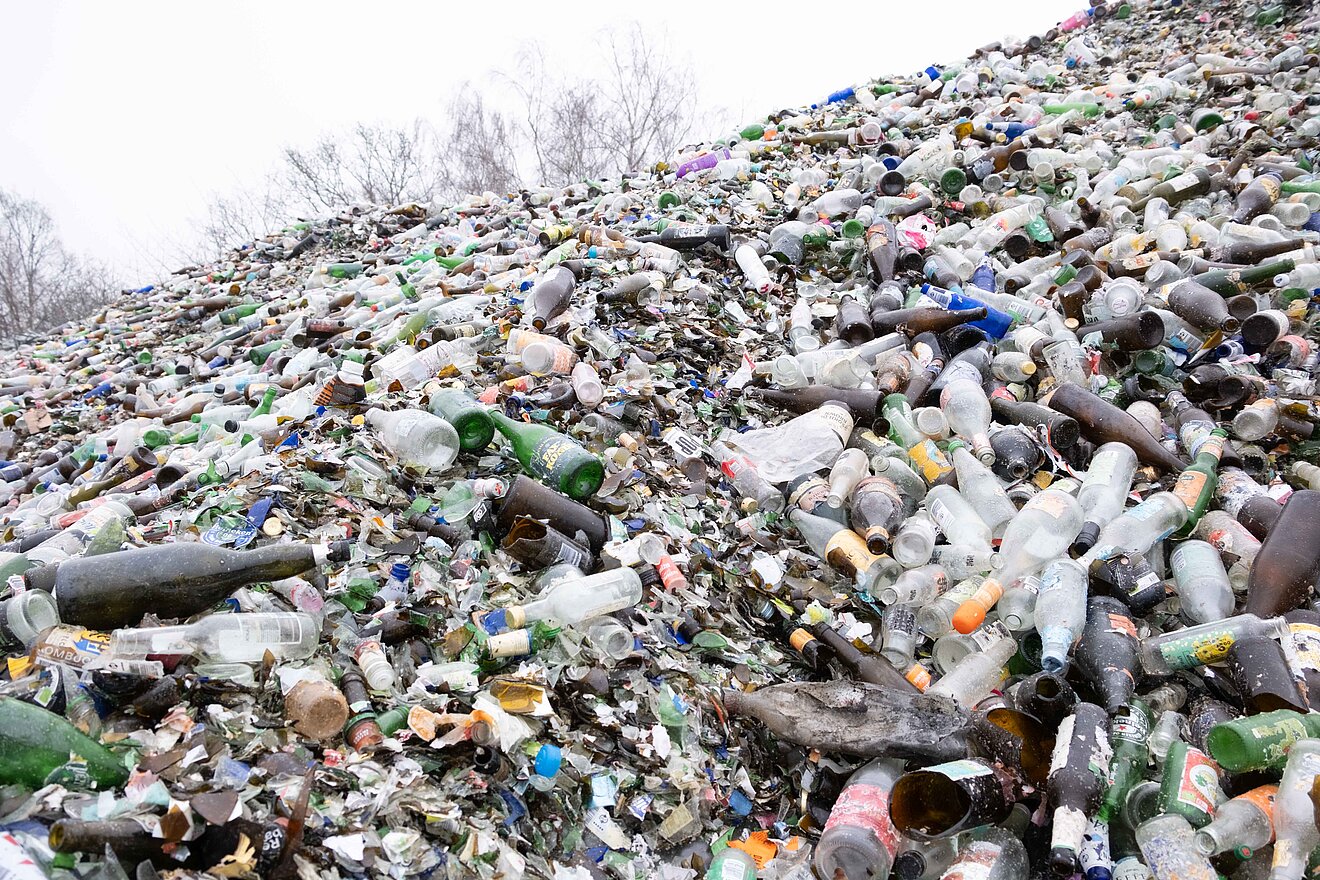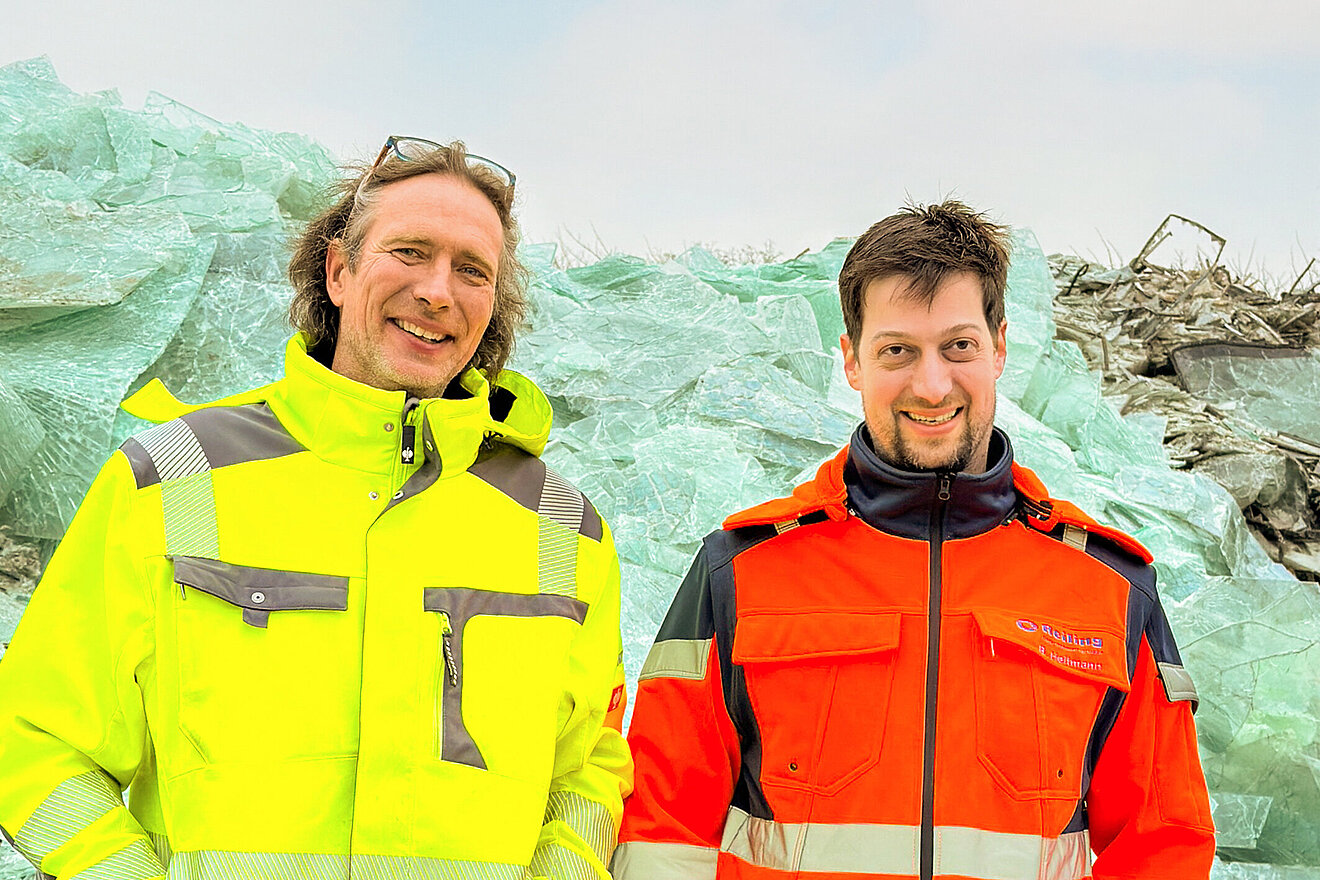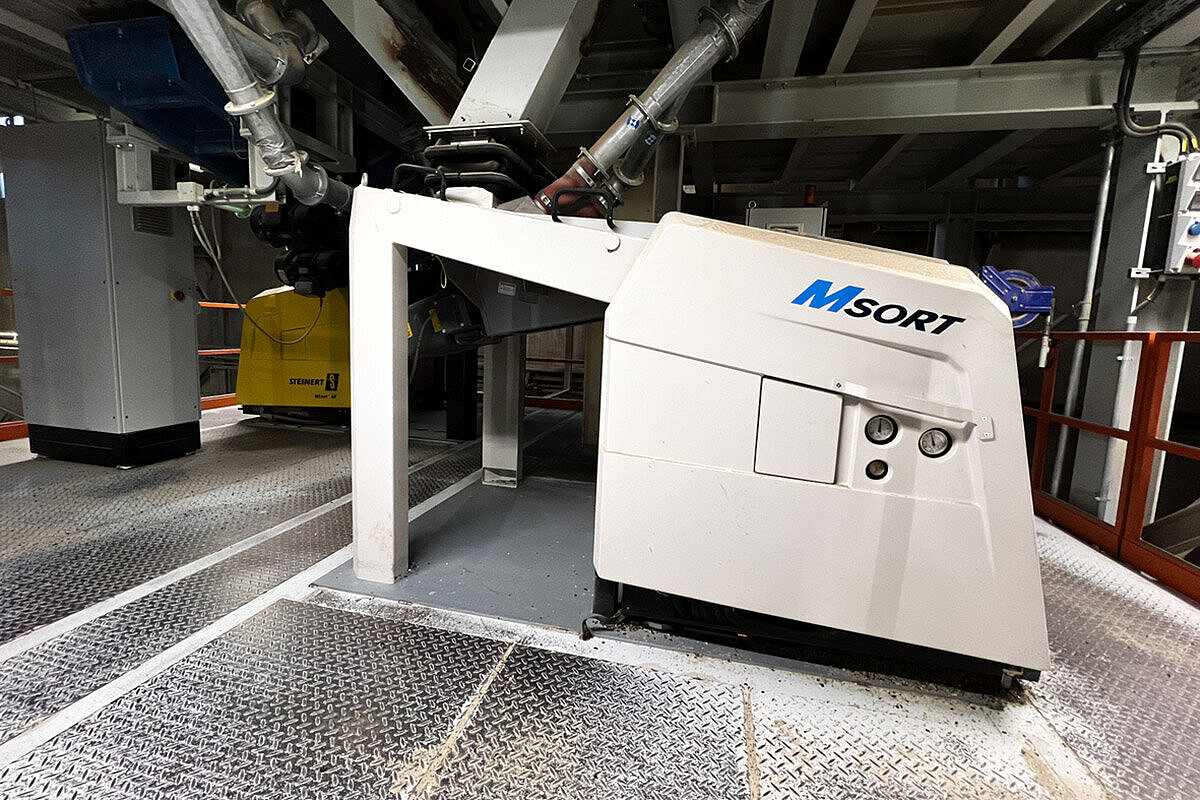
Reiling relies on MSort for glass recycling
MSort sorting systems (formerly Mogensen) have been operating continuously at Reiling in Denmark for over 16 years, running 24/7. Following STEINERT GmbH's acquisition of MSort technology in July 2024, Reiling is entering a new phase of development that will set important trends for the future of glass recycling. Benedikt Heitmann, Managing Director of Reiling Glas Recycling GmbH & Co. KG, explains to STEINERT the role that sorting systems play in meeting strict quality requirements in glass recycling.
At the Næstved plant in Denmark, around 70 kilometres south of Copenhagen, two ‘first generation’ sorters were recently replaced with the latest MSort technology. This means that the fine glass line on site is well equipped for sorting the 3–10 mm fraction in the coming years. Even after ten years, the remaining MSort systems in the 10–60 mm line are in such good condition that they can continue to operate reliably with minimal maintenance.
On a cold February day, STEINERT met Benedikt Heitmann at the Næstved factory. He explained that Reiling generally receives two types of glass: hollow glass and flat glass. The former includes container glass, such as beverage bottles and food packaging. The latter includes insulating glass, as well as windows and car windows, which come from replacement sources, among other things. According to the expert, it is crucial to distinguish between the types of glass, as the sorting process varies.
In Denmark, the recycling of hollow glass begins either at collection containers or as part of the deposit return system. Some regions also have a third stream, collecting glass and metal together from private households. These material streams are processed at the Næstved site, where the glass is cleaned and sorted before being returned to the cycle in the form of recycled cullet. The following section focuses on this material stream.
Strict threshold values are used as the benchmark
Managing Director Benedikt Heitmann emphasises:
No matter how bad the input material of the hollow glass that ends up with us is, the sorted product at the end of the entire sorting line is subject to strict limits. Even small quantities of impurities can cause major damage in the manufacture of new glass products. We return more than 90% of the glass that arrives here to the glassworks.
One of Heitmann's tasks is to select the appropriate technology to ensure compliance with the limit values. This is no easy task, as the requirements for cullet quality composition are high. These values are specified in guideline T 120, ‘Quality requirements for cullet for use in the container glass industry'. Developed years ago through close collaboration between glassworks and recyclers, this guideline aimed to achieve a standardised approach. The guideline permits two grams of Fe-metals per tonne of glass, which is equivalent to the weight of a small piece of wire. For comparison, an Fe-lid weighs 10–20 grams. Recyclers may not exceed three grams per tonne of non-ferrous metals. The limit for KSP (ceramics, stones and porcelain) contaminants is 20 grams per tonne, which is equivalent to the handle of a cup. After sorting in Næstved, the secondary raw material is sent to the Ardagh Group, among others. The world's second-largest glass producer is based in Holmegaard, just a 15-minute drive away.
Mechanical pre‑sorting
The first steps in the recycling plant are crushing and pre-sorting. Without these steps, there would be no raw material from recycling. A roller crusher separates the different materials from each other by crushing the glass. Light material extractors separate labels and paper, while magnets and non-ferrous metal separators remove iron and non-ferrous metals from the glass. Plastics are also largely separated at this stage. However, this process produces a residual fraction that still contains a considerable amount of glass.
MSort sorting systems are used for glass recovery and fine sorting
In order to further increase the recovery of raw materials, Reiling then relies on a Recovery Line in the next step.
Both rejected material and glass from the 0–10 mm fraction produced in the main processing plant are fed into this line. These quantities pass through optical sorting systems again at a lower belt speed, as absolute accuracy is required.
But what exactly is optical sorting? Sensors use transmitted light to ‘see’ whether light can pass through the glass. If no light passes through, the material must be a contaminant, such as KSP (ceramics, stones or porcelain). If it is metal, the metal sensor identifies it. Air blasts then separate the sorted material into A and B.
The Recovery Line consists of fine and coarse sorting. Several MSort sorting systems of different generations are used for coarse sorting. The Fines Line, which sorts fragments measuring 4–10 mm, now features STEINERT's latest systems in their distinctive yellow design: The MSort AF (Rougher stage) and the MSort AK (Cleaner stage). Since 2014, the MSort AX has been used for fragments measuring 10–60 mm. Once the impurities have been removed, colour sorting follows. The final stage of the process produces brown, white and green glass in their purest form.
Longstanding partnership: MSort has been with Reiling since the very beginning
MSort sorting systems have been on the market since 1996, when they were still operating under the Mogensen umbrella. The first MSorts were put into operation at Reiling just one year later. Today, almost 30 years later, many of these sorting systems have been distributed throughout Europe.
In conclusion, the Managing Director emphasized:
We have been relying on MSort for a long time and under the STEINERT umbrella we are once again investing in sorting technology. For this reason, we are building on our long-standing supplier and following the path to the new generation of sorting systems in glass recycling. Today's progress is tomorrow's standard.
The goal is to feed more than 90% of input quantities into the recycling cycle in future.
STEINERT MSort is happy to help.









